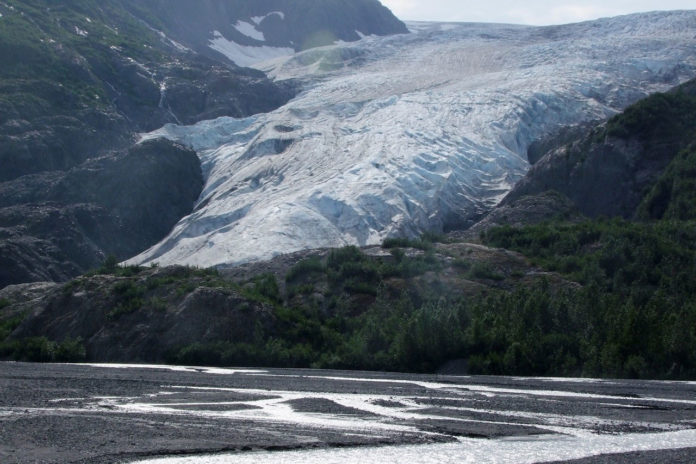Climate change is driving rapid changes in Earth’s ecosystem. It has posed many challenges and opportunities in nature’s resource management. Ocean heat waves, low summer water flows, and hot water temperatures currently stress many wild salmon.
Now, a study led by Simon Fraser University researchers has found that the retreat of glaciers in the Pacific mountains of western North America could produce more than 6,000 kilometers of potential new Pacific salmon habitat by the year 2100.
These glacier retreat is creating new streams and lakes that salmon can colonize. It will overshadow a threat the salmon population faces due to widespread challenges.
The researchers modeled glacier retreat under different climate change scenarios. Essentially ‘peeling back the ice’ from 46,000 glaciers between southern BC and south-central Alaska to determine how much potential salmon habitat would be created when the underlying bedrock is exposed and new streams flow over the landscape.
Desirable for salmon, in this case, means ocean-accessible, low-gradient streams with retreating glaciers at their headwaters—315 of the glaciers considered fit that bill.
A study projects that by the year 2100, glacier retreat will create 6,146 (±1,619) km of new streams accessible for colonization by Pacific salmon, of which 1,930 (±569) km have the potential to be used for spawning and juvenile rearing.
“We predict that most of the emerging salmon habitat will occur in Alaska and the transboundary region, at the British Columbia‒Alaska border, where large coastal glaciers still exist,” says SFU spatial analyst Kara Pitman, the study’s lead author. The Gulf of Alaska sub-region is predicted to see the most gains—a 27 percent increase in salmon-accessible habitat by 2100.
Salmon can colonize these areas once conditions stabilize in the newly formed streams relatively quickly.
“It’s a common misconception that all salmon return home to the streams they were born in,” Pitman says. “Most do, but some individuals will stray—migrating into new streams to spawn and, if conditions are favorable, the population can increase rapidly.”
An example is pink salmon abundance that grew to >5000 adult spawners within ~15 years of a new stream (~2 km) and lake system being created following glacier retreat in Glacier Bay, Alaska.
“On one hand, this amount of new salmon habitat will provide local opportunities for some salmon populations,” says Pitman. “On the other hand, climate change and other human impacts continue to threaten salmon survival—via warming rivers, changes in stream flows, and poor ocean conditions.”
Climate change means we increasingly need to look to the future, she says. “We can’t just protect current-day habitat for species but need to consider what habitats they might rely on in the future.”
SFU biology professor and paper co-author Jonathan Moore adds, “Climate change is rapidly transforming ecosystems. Here we show where and when glacial retreat will create new streams for salmon. If we want to protect salmon futures, this information should inform environmental decision-making and habitat protection.”
“This information can help inform forward-looking decision making and watershed planning so that they don’t just consider current salmon habitats, but also steward salmon futures,” says Dr. Moore.
Journal Reference
- Pitman, K.J., Moore, J.W., Huss, M. et al. Glacier retreat creating new Pacific salmon habitat in western North America. Nat Commun 12, 6816 (2021). DOI: 10.1038/s41467-021-26897-2
